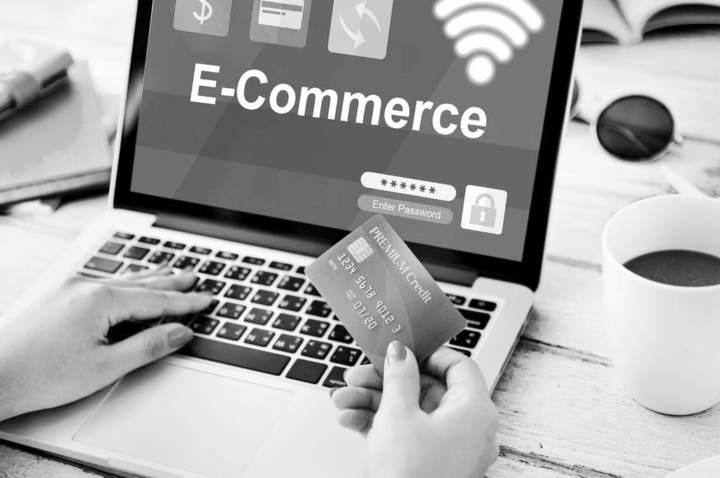There has always been discussion about the growing future of Facebook advertisements and e-commerce. It’s always in the spotlight because of the fierce competition and advancing privacy provided by numerous platforms for today’s users.
People ponder before choosing to invest or spend their money on running campaigns on Facebook. We understand that it might be a daunting decision. But have you ever wondered why, despite the fact that Facebook is a high-risk market, millions of individuals continue to promote and invest in it?
To be realistic, it’s your marketing strategy. It could happen on any e-commerce platform. It isn’t just Facebook. In the long run, Facebook is the clear leader in marketing e-commerce sites. And if you use the platform competently, you will have a considerable advantage over your competitors (and then leverage it correctly).
Here’s how.
But first,
Facebook Ads: Are They Still Beneficial in 2022?
We constantly appear to double-check any choice before making it. However, because Facebook is still more valuable than ever to e-commerce businesses looking to develop their brand,
- According to the most recent Pew Research, Facebook is only second behind YouTube in terms of online platform usage by over 60%.
- In 2021, there will be 2.8 billion active Facebook users (that’s definitely interesting!)
- Facebook’s ad targeting, tracking, and management features remain the most advanced in the industry.
Now, back to the understanding and execution of Facebook ad campaigns.
1. Dynamic product ads
Dynamic Product Ads are ad templates that are customized based on the data of the specific customer, making them more informative, approachable, and much more efficient. They are created programmatically in real-time, using all relevant data on a customer to properly tailor the advertisement.
Ecommerce owners may skip the inevitable effort spent on A/B testing and agonize over creative decisions such as each individual ad’s content, format, and design by employing Dynamic
product ads instead of traditional advertising. You can create a single template that would then automatically provide recommendations personalized for each user.
Smart optimizations may enhance the user experience and shorten the route to purchase by ensuring that your campaigns are in sync with your user conduit, a smooth experience for users by employing deep links or universal links.
2. Multi-product Ads
Multi-product ads allow businesses to promote 3 products in a single ad unit, whether on a laptop or smartphone. Each product has its own image, description, and click target, making it an ideal approach to show its products to the individuals who are most likely to buy them.
Multi-product ads are also intended to generate traffic, boost conversion rates, and improve remarketing results. To make multi-product advertising even more successful and improve sales, you may create a carousel of different things to show in the news feed to targeted audiences by combining the unit with Custom Audiences from your website.
3. Video Ads
Video ads are still the most effective medium available to e-commerce brands. Managing how to develop scroll-stopping, engaging video advertisements can quickly boost any marketer’s competitiveness on the site.
Video ads not only attract more clicks (two times more), but they also provide marketers with greater creative license to showcase a brand’s personality and emotionally connect with an audience. They will also deliver your brand’s message more rapidly, clearly, and appealingly than any other type of advertising.
4. Carousel ads
Carousel ads are not the same as dynamic product ads. Facebook carousel ads provide a world of possibilities for eCommerce firms. They are a type of advertising style in which many films or pictures are combined into a single ad.
Carousel ads are especially popular on Instagram and Facebook, where you may display many photos to increase your chances of conversion or sale. Carousel ads are a particularly engaging approach to marketing a brand since they are aesthetically beautiful and interactive.
5. Facebook pixels for conversion tracking
The Facebook Pixel is crucial to the effectiveness of your Facebook campaigns. It allows you to track the performance of your ad campaigns and the activities users take on your website as an outcome of your Facebook ads. However, the most significant benefit of the Facebook Pixel is not that it allows you to track your progress. It may also assist you in vastly improving your aiming capabilities if you have a basic understanding of how it works.
The Facebook Pixel may be used to track conversions in three ways. Each of these approaches has merits and limitations.
Standard Events – You can track specific events, optimize for conversions, and build audiences using standard events
Custom Events – Custom events are actions that do not fall under the scope of standard events. You can make and use them when you need to track something unusual.
Custom Conversions – Custom conversions can also be used if standard events cannot be added to your website.
6. General retargeting campaigns
Many customers abandon their shopping carts without checking out the items. If retargeting is not used, just about 5% of users return to purchase it. On the other hand, retargeting can attract 24% of users to finish a purchase.
Most of the online visitors retargeted with display advertisements are more likely to convert to your site. Hence, retargeted advertising has a 10x better average CTR than conventional display advertising.
It goes without saying that failing to retarget your visitors costs you conversions and revenue. You may use the Power Editor to execute retargeting campaigns and target your visitors with general offers, discounts, single and multi-product advertisements, and more.
7. Tell your brand story via ads.
To generate a positive impression of your brand in your target market, you must tell a compelling brand narrative. This is because, in order to be a loyal individual, you must attach some emotional value to your product or service in order to attract attention. For you to win their loyalty and involvement, they must understand your journey and history, as well as how your brand narrative links to their own experiences. They must see a larger purpose and significance in the services and goods you offer.
Having the finest brand narrative in your niche, however, isn’t enough to get the outcomes you want. Communicating your brand’s narrative is an excellent strategy to create opportunities for human connection.
That being the case, when it comes to developing the ideal PPC strategy, you must try a wide range of Facebook ads for eCommerce in order to fine-tune the greatest performers for your brand. These methods are used to attract new potential customers as well as remarketing campaigns for prior visitors as well as current clients.
If possible, use examples of brands here

